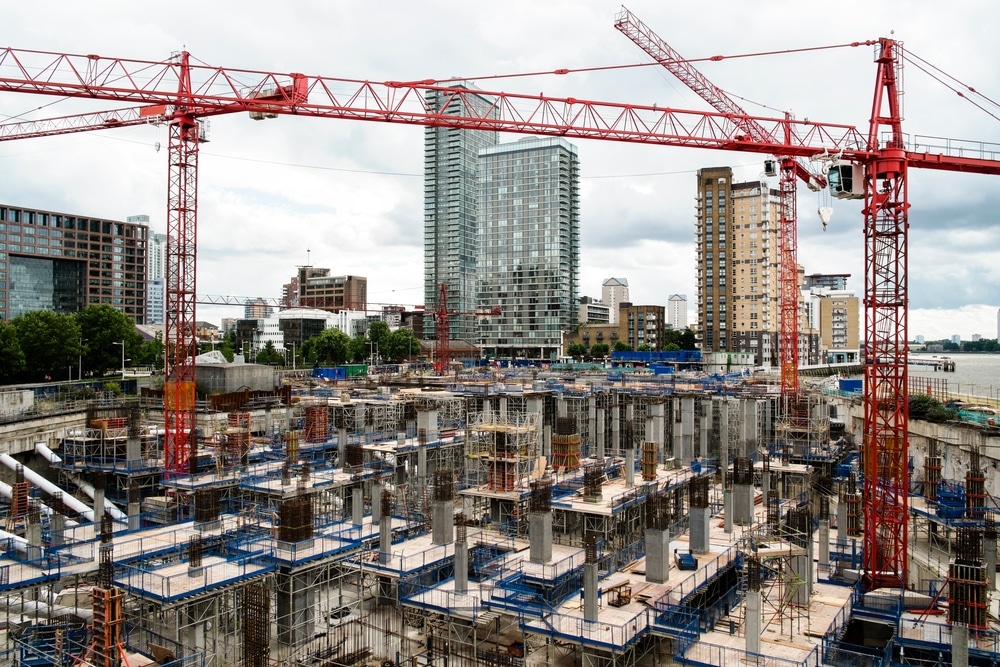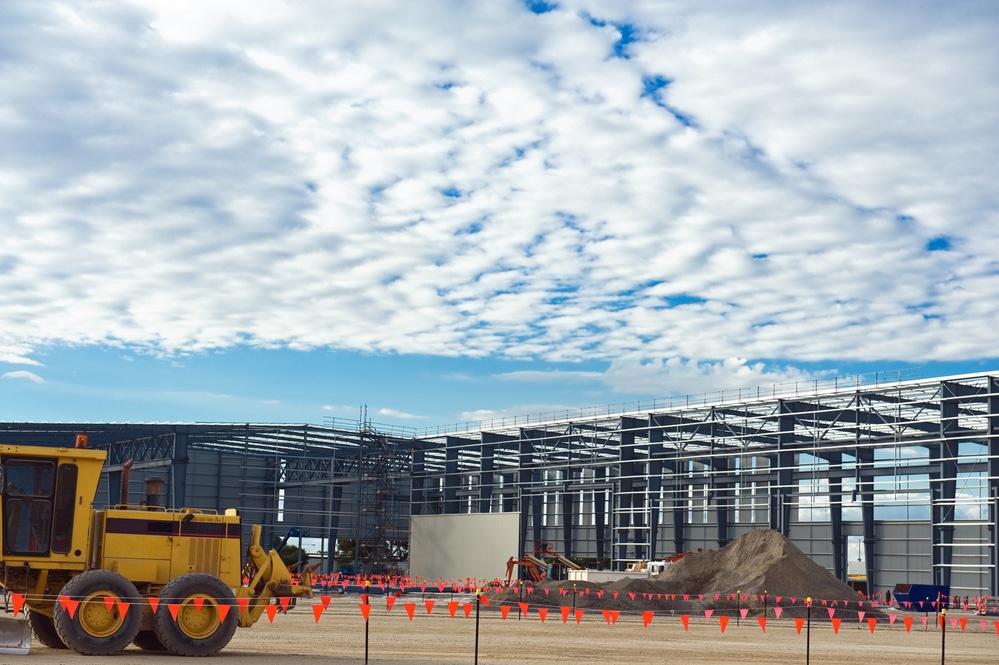Since its emergence, digital technology has affected a great number of industries across the globe. While it’s more visible in certain areas, such as agriculture, manufacturing, and retail, it’s the construction industry that’s taking the biggest advantage of it now. The era of digitalisation has finally reached contractors and their businesses, and it’s about time.
It is said that the majority of construction firms still operate the same way they did decades ago. Even though new technologies have been emerging at a breakneck pace, contractors are quite adamant to change. But a shift from the physical to the digital world is extremely beneficial and construction industry seems to be slowly coming to this realisation.
What is driving the change in the construction Industry?
The world is constantly changing and various industries have to adapt to those new trends. The change is inevitable whether we want it or not. Embracing it now can make a huge difference in both efficiency and cost reduction.
Contractors need to review their long-standing methods and recognise that the development of such old measures will soon be replaced by more digitised solutions. It’s not a now-or-never situation, rather the-sooner-the-better one. Digital technology is the answer to global trends and here are some trends that are particularly driving the change.
Urbanisation
One of the biggest catalysts for change is urbanisation. The population of the world’s urban areas is constantly growing. One research conducted by the World Economic Forum in 2016 examined the situation and estimated that around 200 000 people are moving from rural to urban areas every day! This means a higher demand for construction not only to build more houses but also hospitals, schools, roads, power and water plants, etc.
Labor shortage
Nowadays, construction companies are struggling to find a solution to increase productivity even by 1%. One of the main reasons is the labor shortage. What is more, we are facing a serious lack of talents in this industry. It’s becoming more and more difficult to find professionals to hold high positions and the risk of a labor shortage is higher than ever.
Resources shortage and waste production
Recycling has been a thing for years, but it’s more needed now than ever. Extraction of materials used in the construction industry has increased and new solutions have to emerge in order to stop this environmental exploitation. As a result, there’s more waste being produced causing tremendous problems. Digital technology could alleviate this issue.
Climate change
It’s no surprise that the more people settle down in urban areas, the more pollution is produced. Carbon is changing the climate across the globe and it’s driving the construction industry to change their old methods to reduce its emission. It is estimated that the problem will become more severe over the next decades. A lower ecological footprint is a must, and what’s better than implementing digital solutions.
Digital technologies and the construction industry
Contractors from Florida share that construction technology and productivity have been flat for ages. When asked if contractors view their companies as ‘cutting-edge’, surprisingly only 8% of them said ‘yes’. The majority thinks they’re ‘followers’. This is slowly changing as ways to overcome new challenges are being discovered.
There are various other reasons why construction companies have to become more digitised. Safety in the workspace is actually a priority to minimise the number of accidents on the site. Cost reduction is another factor for the change, not to mention efficiency. The shift from physical to digital is already taking place and here’s how.
Mobile technology and software
Today, it’s possible for contractors and project managers to monitor the work progress from their office without having to travel to remote construction sites. This solution is extremely time-efficient. Employees can use their smartphones to contact each other and update on the progress, as well as send digital pictures for verification and inspection.
Special apps can also help schedule work, manage and report it back to the main office. It improves productivity significantly. Most of this software is cloud-based enabling everyone to access real-time data. It is estimated that this solution can save hundreds of hours every year.
IT companies create other various software such as clash detection software which helps prevent accidents ensuring work safety. Moreover, ordinary people also experience technological advancement in modern houses. Smart buildings are becoming more and more popular, and everything starts with a construction company, indeed.
Construction companies that choose to update most of their manual systems to a digital landscape would benefit from that observability. By adopting full-stack observability, businesses can secure the future of their software. In the past, companies could monitor their IT operations and instantly know what went wrong. As IT becomes more complicated, companies have to use observability tactics to create a more visible environment. With observability, construction startups can automatically diagnose systems and software, detect issues, and identify anomalies proactively. This can help you scale more efficiently.
Personnel management
Digital technology can support personnel management and all areas of operation. We have a very common GPS tracking that helps contractors monitor delivery times, tool-tracking software that prevents companies from big losses as the equipment is usually worth thousands of dollars if not more, or digital access software that tells managers who entered the construction site, when and for how long.
Construction management software also ensures transparency as all the stages of a project are recorded and streamed across various sectors. Digital collaboration platforms help contractors to track the progress and control its performance.
Building Information Modeling
Since its first emergence, BIM has improved work drastically. It allows a digital representation of buildings in a 3D form, not on traditional blueprints. This solution is actually shaping the future of the construction industry. It uses historical data and predictions in order to improve projects and plan the entire process in the most efficient way.
Read also: 4D BIM – Five ways it can transform your project
3D models are much better and depict the reality in a way it never did before. Moreover, all the changes in the model can be done in real-time and employees responsible for the project can access it and communicate with each other in order to discuss the progress.
A common practice is combining virtual reality and augmented reality with BIM to achieve greater results and efficiency.
Augmented and virtual reality
What can go wrong on the construction site? Absolutely everything, that’s why strategic planning is crucial. Nowadays, it can be done with the use of VR and AR. Virtual reality is commonly used to train workers and augmented reality helps prevent possible hazards. Such simulators are of great importance for contractors, but very few make use of it.
Analytics
Analytics can help contractors analyse their material cost, timelines, and further steps into a project with very little risk of failure. Such data is extremely useful to improve productivity and efficiency. Having a plan of execution mapped out provides insights into potential problems and allows contractors to adjust projects in order to avoid them.
But analytics can be used to increase the number of projects as well. Every company has a website where they advertise their service. The construction industry should also take advantage of SEO to target more customers and escalate income. By leveraging a contractor digital marketing agency, businesses can optimise their online presence, ensuring that their services are prominently featured to attract potential clients in a competitive market.
Artificial intelligence and machine learning
AI and machine learning proved their usefulness in the construction industry. It turns years of collected data into predictions and allows contractors to stand out and be more competitive. Intelligent mobile apps, sensors on the site as well as robots help to increase productivity and safety. They are able to create reports that tell you how much work has been done and predict the estimated time of completion.
Algorithms used by AI reports all errors occurring on the construction site as it is able to recognise different building by their shape, size, and location. Most technologies are integrated with each other to allow a better understanding of the process. Smart equipment such as drones and vehicles send digital pictures to your AI, which are then compared with BIM, 3D models, etc. It helps avoid any shortcomings in your project.
Final thoughts
Higher profit margins, reduced cost, time efficiency, better collaboration, and productivity – digital technology does influence the construction industry in a way it never did before. Implementing it is not a choice; it’s slowly becoming a necessity. If you are reluctant to change, you will no longer be in the business. Come around on tech adoption and say yes to innovation to remain competitive and let your company flourish in a natural way.






